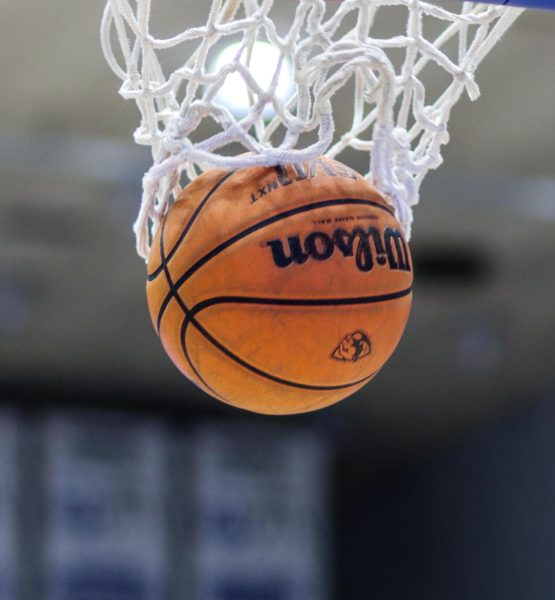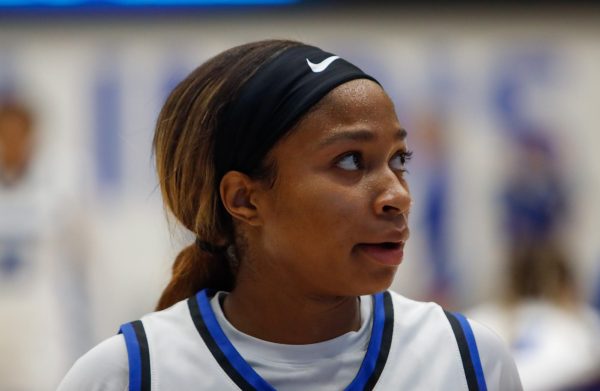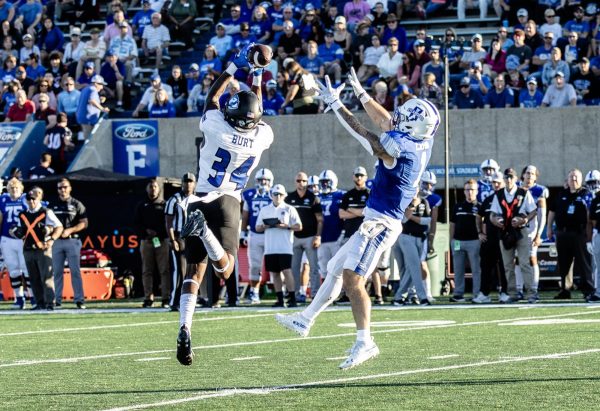Column: FCS or FBS, its all football
Don’t look past small-school football players.
Those should be words of warning for NFL owners, general managers and coaches alike. Just because some players come from the Football Championship Subdivision – not to be confused with the Football Bowl Subdivision or the Bowl Championship Series or any other ludicrous college football acronym – does not mean they can’t play the game on the grandest stage of them all.
Two FCS players have the chance to prove just that after being taken in the first round of the NFL Draft on Saturday. Both have the potential to be key contributors to their respective teams because they transcend the FCS-FBS line. They are good football players regardless of what school they attended.
Tennessee State corner back Dominique Rodgers-Cromartie was the first FCS player to be selected when the Arizona Cardinals picked him as 16th overall pick. Rodgers-Cromartie opened eyes with his performance at the Senior Bowl and the NFL Combine. He was called one of the best athletes available, and that’s the truth.
He has incredible speed and field awareness. His interception return for a touchdown against Eastern in October proved that. There was no one on the field that could catch him as he weaved across the field before breaking free down the right side for the 69-yard touchdown at LP Field in Nashville, Tenn.
Rodgers-Cromartie needs to improve his coverage skills in pass defense, but he has the ability to turn heads on special teams. He might have the most influence on special teams in his first few years in the league until he gains experience and expertise in the secondary.
Delaware quarterback Joe Flacco is a big-school guy in a small-school program. He transferred from Pittsburgh after two seasons, and that move turned into success at Delaware as he led the Blue Hens to the FCS title game this past season.
The Blue Hens lost in the FCS title game, but Flacco was selected in the first round (18th overall) by the Baltimore Ravens.
Flacco has all the tools to be a franchise quarterback in the NFL. He has the size (6-foot-6, 236 pounds) to see over the offensive line and find open receivers. He also has a cannon arm to get the ball downfield, which is what made him stand out at the NFL Combine compared to the rest of this year’s quarterback class. What he needs, however, is more mobility in the pocket. His size could work against him at times.
But what about those small-school players who haven’t had the same exposure as Rodgers-Cromartie and Flacco?
Players like Eastern linebacker Donald Thomas.
Thomas plays with one of the highest motors I’ve seen. His speed at linebacker makes him a valuable commodity. But that’s a commodity that might not get used. There’s one knock against Thomas, and that’s his size. At 5-10, Thomas is not the ideal height for an NFL linebacker.
There’s another Thomas out there – Dallas Cowboys’ linebacker Zach Thomas – that many said would not succeed because of his size (5-11). But Zach Thomas has made seven Pro Bowls in his 12-year NFL career.
Donald Thomas’ speed will make the difference between catching on with a team and ending a football career.
“That’s one of my biggest assets – my ability to get east and west and north and south. That’s one thing that defines me as a football player,” he said. “(Eastern defensive coordinator) Roc Bellantoni stressed and always told me to get to the ball. I just have a nose for the ball.”
Thomas does indeed have a nose for the ball. He got involved in every play from his position in the middle of the defense. His sideline-to-sideline speed makes him unique. He can chase down the fastest offensive players on the field. He just needs a chance at the next level.
NFL teams need to look past what is traditionally expected at certain positions. Height and size isn’t everything.
There should always be a place for heart.
Scott Richey can be reached at 581-7944 or at srrichey@eiu.edu.





































































